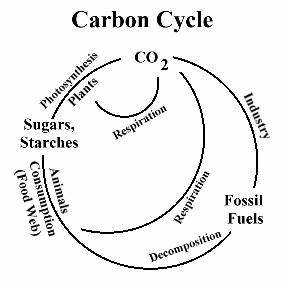Introduction
The biochemical cycles known by another name the nutrient cycles involve a process by which there is a noticeable change in an element’s physical or chemical structure as it moves through the different systems of the earth.
These systems include the atmosphere, lithosphere, biosphere and the hydrosphere. It is important for these cycles to occur as they help in replenishing elements that may not be freshly produced hence making them available at all times.
Most of these elements that undergo recycling are the very vital elements or nutrients required by all,l living things to survive, for example, water, carbon, nitrogen just to mention, but a few.
A nutrient is, therefore, a substance that is required by living things for their survival (Bolin, 2001, p.1). There are macronutrients that are required in larger quantities in the body, and these include carbon, phosphorous, carbon, oxygen, nitrogen and hydrogen.
As for the micronutrients, they are required in small amounts but are also essential. Boron, copper, and molybdenum fall in this category.
Major Biogeochemical Cycles
The major biochemical cycles that occur on earth are the carbon, water, nitrogen, hydrogen, and the sulfur among others. The water cycle is very important to all living things since it is an essential nutrient for growth and life.
It is also known as the hydrological cycle and mainly involves evaporation of water from the earth’s surface to the atmosphere where it condenses then falls in the form of precipitation collecting in the sea, lakes, rivers or sinks down to form the groundwater.
The process is thus repeated forming a cycle. The nitrogen cycle is another major cycle which occurs by nitrogen from the atmosphere being fixed into the soil through a process known as nitrogen fixation mostly carried out by organisms such as algae and bacteria.
Carbon is also an important element for the living organisms; hence the carbon cycle which is a gaseous cycle takes place to recycle the carbon and make it available for the living organisms.
Carbon is found in living or organisms that have died recently, in the atmosphere, in water bodies and dead organisms in the form of calcium carbonate. There is also the sulfur cycle, though required in limited amounts because of safety sulfur is also very important.
It involves the gaseous sulfur in the form of sulfur dioxide or particulate sulfur found in the air. The other major biochemical cycle is the phosphorous cycle; this is a sedimentary cycle providing energy to living organisms.
Micronutrients though required in minimal amounts; they play a very important role in the global cycles as some activities to support the major cycles while others accelerate the major cycles (Bolin, 2001, p.1).
Global cycles are those that act to support the earth’s system. An example of a global cycle is the carbon cycle. It occurs when plants absorb carbon dioxide from the atmosphere and use it to manufacture food.
The animals feed on the plants, and upon their death, the animals decay hence deposited to form coal or petroleum. On the other hand, the sea creatures get the dissolved carbon dioxide from the atmosphere which has combined with the water.
The shells of the dead creatures form at the base of the water body forming limestone. The cycle continues; hence carbon is recycled.
The impact of the carbon cycle is that there may be excess carbon that may be produced in the atmosphere and hence being poisonous. Diagram showing the carbon cycle

Fig. (Bolin, 2001, p.1)
Conclusion
All biochemical cycles however major or minor the nutrient involved is are important to the environment. This is because they help in replenishing the nutrients making them available to living things at all times.
Reference List
Bolin, P. (2001). The Major Biogeochemical Cycles and Their Interactions. Web.